new posts in all blogs
Viewing: Blog Posts Tagged with: 2001, Most Recent at Top [Help]
Results 1 - 12 of 12
How to use this Page
You are viewing the most recent posts tagged with the words: 2001 in the JacketFlap blog reader. What is a tag? Think of a tag as a keyword or category label. Tags can both help you find posts on JacketFlap.com as well as provide an easy way for you to "remember" and classify posts for later recall. Try adding a tag yourself by clicking "Add a tag" below a post's header. Scroll down through the list of Recent Posts in the left column and click on a post title that sounds interesting. You can view all posts from a specific blog by clicking the Blog name in the right column, or you can click a 'More Posts from this Blog' link in any individual post.
Grump. Janet Wong. Illustrated by John Wallace. 2001. Simon & Schuster. 32 pages. [Book I Bought]
Look how tired this Mommy isTired and frumpyGrouchy chumpyOh, what a grump!
Look at BabySmart, good BabyHappy BabyMaking gravyApplesauce and ketchup gravyNot too lumpyNot too bumpySquish squishDUMP!Grump is one of my favorite, favorite, favorite books. I almost don't even need to make the qualification of favorite
picture book. It's a book that begs to be read aloud again and again and again. The rhythm of it is almost magical--at least to me! I love the use of language, I do. I love the way it sounds, the way it feels on my tongue. It's real life. It's poetry. It just works.
The story of this one is simple. It's been a LONG, LONG, LONG day for this Mom and her Baby. And even if the Baby doesn't think he needs a nap, he needs a nap. But will this baby go down for a nap? Not without an all-too-familiar-struggle!
Baby's going to take a nap nowBaby's going to take a nap nowBaby's going to take a nap nowTake a nap nowLittle lump.She puts him in his crib and...
And oh of course that baby criesCries and whimpersCries and whimpersCries and whimpersPlay with me!So Mommy sits And reads to BabyReads so prettyReads so softlyReads and reads and reads until--Can you guess what happened to the oh-so-tired, oh-so-grumpy Mommy?
This one is such a GREAT book. I loved how true-to-life it was. Not only for the baby, not only for the mommy--but it captures the ups and downs of the whole relationship.
This one has been a favorite going on ten years. Today I was looking to review some board books, hoping to find something great to share with you, when I thought again of Grump. Why isn't Grump still in print? Why hasn't it been reprinted? Why??? It's just a WONDERFUL book. And it would be a great board book!!! The combination of this story with that format would be just perfect!!!!
Text: 5 out of 5
Illustrations: 4 out of 5
Total: 9 out of 10
© 2015 Becky Laney of
Becky's Book Reviews
Ella Minnow Pea. Mark Dunn. 2001. Random House. 224 pages. [Source: Library]
It has been years since I first read Ella Minnow Pea. For better or worse, my original review was more of a teaser, I didn't record what I *felt* about the book after reading it. The sad thing is, I was tempted to go that way this time as well. The premise is probably the most interesting thing about the book.
Ella Minnow Pea is set on a fictional island called Nollop located a dozen or so miles off the coast of South Carolina. The people of Nollop supposedly "worship" Nevin Nollop, author of this not-so-little sentence: The quick brown fox jumps over the lazy dog. When the letter tiles start falling off the statue/memorial, the High Council decide it's a sign from Nollop the Supreme Being. It's oh-so-obvious to them, though not particularly to the average citizen, that Nollop is telling them to STOP using the fallen letter. One by one the tiles fall--over six months or so. The penalties for speaking or writing one of the forbidden letters is severe: a matter of life or death if you persistently rebel. But you don't even have to be defiant or rebellious. A crime is a crime no matter if it's accidental or intentional.
How does this effect life? at school? at home? at work? Will this turn neighbor against neighbor? Or will it somehow bring it closer together?
Readers meet a handful of characters through letters. But characterization isn't one of the novel's strengths, in my opinion. All the characters tended to blend together.
The plot, well, it comes a bit later in the novel. A challenge is issued at some point by the council, if and only if, someone can write a new pangram--a sentence using all twenty-six letters, and for the purposes of this challenge limited to thirty-something letters, then the council will bring back all the forbidden letters and life will go on as it did before. The last third of the book is about trying and failing to write the pangram by the deadline.
The premise is the novel's strength. And depending on your mood, the novel may prove worth reading even if it's just for the premise alone. It is a unique idea, in my opinion. And epistolary novels aren't all that common.
What I didn't comment on in my initial review, so I have no idea if it bothered me then or not, is the WORSHIP aspect of this one. How the island has built a cult, of sorts, around Nollop, and talk as if he is actually a supreme being instead of another human. There are elements of this one that are just so over-the-top. I am not sure if it is innocent humor, or hit-you-over-the-head symbolism.
Did I love it? No. Probably not. Did I like it? Well, I read it twice. And it isn't like anyone forced me to pick it up again. It was a quick read and pleasant enough for the most part.
© 2015 Becky Laney of
Becky's Book Reviews
Everything on a Waffle. Polly Horvath. 2001/2008. Square Fish. 176 pages. [Source: Review copy]
There were things about Polly Horvath's Everything On a Waffle that I liked. I liked the heroine, Primrose Squarp. I liked how unique she was. She had a unique way of seeing the world around her, a unique perspective on just about everyone in town. The novel opens with tragedy, what most people would call tragedy. Primrose loses her mom and dad to a storm. Her dad was out sailing, her mom saw how horrible the storm was, got worried and left in another boat to go find him. Every single person in town, and, most every person from out of town who hears the story, concludes that Primrose's parents are dead. Their bodies have not been recovered, but, they are most certainly dead. Primrose arrives at the opposite conclusion. Her parents are not dead. They are not. They may be marooned on an island. They may be missing for a time. But her parents are most definitely alive. Many well intentioned folks in town encourage Primrose to come to terms with what has happened, to grieve her parents, to react and feel. But instead of Primrose coming to terms with her loss, it is the town who ends up coming to terms with Primrose and her unending optimism. No one is quite sure what to make of Primrose, she's just Primrose.
After a few weeks, Uncle Jack comes to stay with Primrose. Uncle Jack doesn't demand much from Primrose. He doesn't demand that she get in touch with her emotions and talk it all out. He lets Primrose be herself. And he accepts Primrose pretty much as is. And she does the same. Both are flawed beings, if you will. They seem to fit together well enough.
Miss Honeycut watches Primrose closely. She does not think Primrose is doing well at all. She thinks Primrose needs something that Uncle Jack could never give her.
One of the things that sets the book apart are the recipes at the end of every chapter. Also the small town quirky charm. I absolutely loved the idea of THE GIRL IN THE SWING restaurant. I loved the owner. I loved the idea that EVERYTHING on the menu came with waffles. Very unique.
As I said, I liked this one. I didn't love it.
© 2014 Becky Laney of
Becky's Book Reviews
Fair Weather. Richard Peck. 2001. Penguin. 160 pages. [Source: Library]
Is Fair Weather my absolute favorite novel by Richard Peck? In all fairness, how could I really ever choose? Sure, I love, love, love some more than others. Some I've reread more than others. Some I've recommended more than others. But most that I've read (so far) have been worth it. Fair Weather is no exception.
World's Fair. Chicago. 1893. I really enjoyed so many things about Fair Weather. I liked the three Beckett siblings. I liked the narrator, Rosie. I liked the younger brother, Buster. I liked the older sister, Lottie. I liked the fact that Lottie had a big, big secret. I liked the extended family. That Grandpa. He's SOMETHING. I loved, loved, loved every scene he was in. He was FABULOUS. I wish more children's books had such wonderful grandparent-characters. I really really enjoy books that focus on the special bond between grandparents and grandchildren. My favorite, favorite chapters in this one are the two chapters that focus on his best day ever. They also happen to mention Buffalo Bill's Wild West Show. I liked the aunt as well. She wasn't quite as quirky as the grandpa--but who could be?! I was glad to see how hosting her family for a week changes her--for the better. The details. I love historical fiction BECAUSE I love history. OR. Do I love history because I love historical fiction?! I love how this one is grounded in real-life details. I loved learning more about the World's Columbian Exposition. I loved the little things, the descriptions, the scenes. I love how it captured the feel of The Midway. It made me want to read more, to learn more. I also loved the Chicago setting.
A few weeks ago, I happened to watch Annie Oakley (1935). I had seen the musical, of course, but this one really impressed me. Reading Fair Weather and "experiencing" the show through fiction--through characters that I had come to really care about--was really fun for me!
I definitely recommend this one!
© 2014 Becky Laney of
Becky's Book Reviews
The Magic of Ordinary Days. Ann Howard Creel. 2001. Penguin. 304 pages.
I picked this one up after watching the movie adaptation. I just loved the movie. It felt like it would be my kind of book too: set just in the right time period for me to love, World War II. But would I like the book or movie better?
Olivia (Livvy) Dunne finds herself married to a stranger, Ray Singleton--a farmer--after she finds herself in an unfortunate situation: she's pregnant. Her father arranges with another minister to marry off 'poor' Livvy to a good, stable man. The two meet on their wedding day. She asks him WHY he's willing to marry a stranger and IF he'll be able to love the baby. His answer surprises her, he feels it's God's will to bring them together, and, of course, he'll love her baby. It is the raising of a child that makes a father.
The novel chronicles their lives together that first year as she adjusts to an isolated country lifestyle, as she tries to find ways to occupy her time and grasp the fringes of her true dreams. She loves history and archaeology. She loves finding and discovering old things. She loves finding out about the past, imagining herself in that past. Ray is only a little helpful, it is Ray's sister, Martha, who is able to help her the most. For Martha has stories about their parents, grandparents, etc. It is Martha who is able to tell her about the settling of the place, the original structures built, how their family lived and worked and struggled to create a legacy for the family. And Livvy does see how very much Ray loves the farm, the land, the strong connection he feels to the past and present.
Livvy is lonely still, however. She becomes friendly with two Japanese women living at a nearby Japanese internment camp. She actually meets them in her own fields--for they have been hired to help with the harvest. It seems they are an answer to her prayers; they are so nice and friendly and pleasant to talk with. They even volunteer their tailoring services--providing her with a maternity dress and suit. But is the friendship genuine? I think it's as genuine as it can be since Livvy doesn't like being vulnerable and the two sisters almost by necessity don't feel comfortable telling all their secrets either. I'm not even sure Livvy realizes this until the end when she sees that by protecting herself, protecting her heart, always keeping things inside, she's keeping love out too.
Livvy's perspective provides insights to readers about what it was like to live during this time. Livvy tries to keep up with the war through newspapers--though she has to content herself with news that is a day or two old since the delivery is so slow. The travel restrictions also keep Livvy at home with Ray instead of allowing her to visit her family at Christmas and New Years--like she originally planned. ("I'll Be Home for Christmas" would have still been a 'new' Christmas song, having been done in 1943. "Have Yourself a Merry Little Christmas" would have been another 'new' holiday song first introduced in the 1944 musical, Meet Me in St. Louis. "The Christmas Song" was written in 1944, but not recorded until 1946.)
I really enjoyed this novel. I loved Ray and Livvy. I loved Martha and her daughter too.
Read The Magic of Ordinary Days
- If you like historical fiction with a touch of romance
- If you like stories set during World War II
- If you like rural/country stories set on farms
- If you like marriage-of-convenience or arranged marriage stories
- If you enjoyed the movie
© 2012 Becky Laney of
Becky's Book Reviews
Dear America: Christmas After All. Kathryn Lasky. 2001/2012. Scholastic. 192 pages.
November 25, 1932Indianapolis, Indiana The Day After ThanksgivingMama and Papa believe in cold. That's why I tell Lady we have nothing to fear. You see, Mama and Papa have toughened us up on the sleeping porch. That's where we sleep with no heat and just screens, and not just in summer but all through the fall and beginning again in early spring. We're used to cold. But now we're going to be hardened off for the rest of the year in the rest of the house. You see, Mama and Papa are closing off the dining room and the big library and four bedrooms. Christmas After All is my first Dear America book, but it won't be my last! I have a feeling I would have loved this series as a kid!
The book is set in November and December of 1932. The heroine, Minnie Swift, is one of many in her large family. The Depression has changed things for her family, sacrifices are having to be made, but Minnie is learning to change and adapt with those times. One of the biggest changes is welcoming in an orphan cousin, Willie Faye. This novel does have heart. I enjoyed seeing these two cousins become close; it also works as a nice coming-of-age story for Minnie. Many things may be changing in the family: her dad's unemployment, her sisters growing up and starting to date, etc., but there will always be plenty of love...even if that love is served au gratin. I really appreciated the attention to detail. Learning about radio shows and music, comics and books, movies and movie stars, fashion and hair styles. Learning about crafts and hobbies. Her family is very creative and resourceful! And the food!!!! Oh Minnie definitely had opinions on the new recipes. Oh how she hated ASPIC. Not that she was fond of having things au gratin...but tongue aspic--oh, the thought! One of her favorite dishes is Welsh rarebit. Read Christmas After All
- If you are a fan of Kathryn Lasky; this story is inspired (in part) by her family history.
- If you enjoy the Dear America series
- If you are looking for historical fiction set during the 1930s
© 2012 Becky Laney of
Becky's Book Reviews
Making the List: A Cultural History of the American Bestseller 1900-1999. Michael Korda. 2001. Barnes & Noble. 256 pages.
Making the List is a good example of a book that makes for good skimming. This is not one you need to read word-for-word. And the better you are at skimming, the more forgiving you are as a reader, well, the more you'll enjoy this one. The book has a couple of weaknesses. One, Michael Korda is a little too fond of mentioning Michael Korda and Michael Korda's time on the bestseller list. He mentions the title of one of his 'bestselling books' as often as he can. Or at least it felt like it. It feels intrusive on the text to be discussing the statistics and patterns of trends and genres or discussing the popularity of certain authors through the decades, and then suddenly the text becomes all-about-him either as an author or as a publisher, someone inside the publishing field. Some of his commentary feels a little odd, a little too random. Once he begins his job in the late fifties, I believe, he couldn't resist mentioning which books came from his publisher, how he felt about those books, his reaction to a book making it or not making it on the list. I don't know about all readers, but this reader, didn't want to know anything
and everything he could possibly say on every book that made the list.
But. Making the List remains an interesting book. It is interesting because of what it has to offer readers: a list of fiction and nonfiction from each year. It is interesting because it does the work for you. You might be able to find the information online at various places--but it would probably be work. And it would definitely take more time and energy. And reading the lists is in itself interesting. To see which authors were repeats. To see how many years a book could stay on the list. To see which 'genres' dominated year by year, decade by decade. To see some strange titles--fiction and nonfiction. To see which books and authors became forgotten by time, by the reading public. To see which books are still in print. To see how many books were adapted into plays or movies. To see how many books were children's books (Pollyanna, etc.) To see the tension between "literary" books and "popular" books. It was interesting at a very basic level to see how many I'd read.
Read Making the List: A Cultural History of the American Bestseller, 1900-1999
- If you like lists
- If you like participating in reading challenges, particularly challenges that challenge you to find books from specific years, decades, etc.
- If you're always looking for older books, classic books, titles that may be available for free online
- (This would probably be only a quarter of the list, but still, it may give you ideas.)
© 2012 Becky Laney of
Becky's Book Reviews
Grump. Janet Wong. Illustrated by John Wallace. 2001. Simon & Schuster. 32 pages.
Look how tired this Mommy isTired and frumpyGrouchy chumpyOh, what a grump!
Look at BabySmart, good BabyHappy BabyMaking gravyApplesauce and ketchup gravyNot too lumpyNot too bumpySquish squishDUMP!Grump is one of my favorite, favorite, favorite books. I almost don't even need to make the qualification of favorite
picture book. It's a book that begs to be read aloud again and again and again. The rhythm of it is almost magical--at least to me! I love the use of language, I do. I love the way it sounds, the way it feels on my tongue. It's real life. It's poetry. It just works.
The story of this one is simple. It's been a LONG, LONG, LONG day for this Mom and her Baby. And even if the Baby doesn't think he needs a nap, he needs a nap. But will this baby go down for a nap? Not without an all-too-familiar-struggle!
Baby's going to take a nap nowBaby's going to take a nap nowBaby's going to take a nap nowTake a nap nowLittle lump.She puts him in his crib and...
And oh of course that baby criesCries and whimpersCries and whimpersCries and whimpersPlay with me!So Mommy sits And reads to BabyReads so prettyReads so softlyReads and reads and reads until--Can you guess what happened to the oh-so-tired, oh-so-grumpy Mommy?
This one is such a GREAT book. I loved how true-to-life it was. Not only for the baby, not only for the mommy--but it captures the ups and downs of the whole relationship.
This one has been a favorite going on ten years. Today I was looking to review some board books, hoping to find something great to share with you, when I thought again of Grump. Why isn't Grump still in print? Why hasn't it been reprinted? Why??? It's just a WONDERFUL book. And it would be a great board book!!! The combination of this story with that format would be just perfect!!!!
© 2011 Becky Laney of
Young Readers
Lester del Rey in
Galaxy Magazine, 1968 (reprinted in
Best SF: 1968 edited by Harry Harrison and Brian W. Aldiss):
[2001: A Space Odyssey] isn't a normal science-fiction movie at all, you see. It's the first of the New Wave-Thing movies, with the usual empty symbolism. The New Thing advocates were exulting all over it as a mind-blowing experience. It takes very little to blow some minds. But for the rest of us, it's a disaster.
It will probably be a box-office disaster, too, and thus set major science-fiction movie making back another ten years.
Peter Krämer,
2001: A Space Odyssey (BFI Film Classics, 2010):
2001's most far-reaching contribution to American -- and also to world -- culture arguably lies in the fact that it both inspired the making, and prepared the ground for the success, of two movies that in 1977 marked an important turning point in Hollywood's operations: George Lucas's Star Wars and Steven Spielberg's Close Encounters of the Third Kind. ...[B]efore the mid-1960s, no science-fiction movie, with the exception of a few Disney comedies and adventures about advanced technologies, had been ranked towards the top of the annual box-office charts in the United States, yet, with the help of several re-releases, 2001 eventually became the second-biggest hit of all films originally released in 1968. ...
This double success [of 2001 and Planet of the Apes] encouraged Hollywood to invest heavily in science-fiction...
John Scalzi,
"Seven Studios That Reaped Infinite Rewards from Sci-Fi":
All told, out of 70 available top-ten slots for the major studios, science fiction fills 27 -- nearly one out of every four.
By:
Administrator,
on 12/7/2009
Blog:
Margo Dill's Read These Books and Use Them!
(
Login to Add to MyJacketFlap)
JacketFlap tags:
2001,
September 11,
Elementary Educators,
Making Personal Connections,
Preschool to 1st grade teachers,
Shared Writing,
Maniac Mondays,
Writing Skills,
High School Teachers,
teaching current events,
teaching strategies current events,
Young Adult Novels,
pop culture,
Add a tag
 photo by The U.S. Army www.flickr.com
photo by The U.S. Army www.flickr.com
When I was a fifth grade classroom teacher, I remember struggling with teaching current events. I looked around for teaching strategies for current events and pop culture, but then I realized I just had to go with my gut. The biggest challenge was, of course, September 12, 2001 when I was scared to death to walk into that fifth grade classroom with my students’ huge eyes, scared faces, and confused minds. Our school counselor helped with teaching strategies, and I decided to tackle it head on with a journal prompt on the board that said, “Open your journals and write about anything you want, including what happened yesterday. If you don’t feel like writing a paragraph, you can draw, make a list, or even write some questions.” Students actually looked relieved when they saw this on the board–almost like, “Oh, thank goodness,she is going to talk about the terrorists’ attacks with us today because it is on our minds.”
I’ve been thinking about this subject a bit more now that I am out of the classroom on a regular basis and aware of several issues that everybody is talking about. Using teaching strategies for current events about the war in Afghanistan or the health care debate can range from journal entries to high school classroom debates to Powerpoint presentations or bulletin boards full of newspaper clippings. Talking about these issues in a history, social studies, or government class is appropriate, important, and probably satisfies part of the curriculum.
 photo by R’Eyes www.flickr.com
photo by R’Eyes www.flickr.com
But what do you do as a teacher at any level when current events such as the Tiger Woods scandal, Jon and Kate divorce, or even David Letterman confession are on everyone’s minds and your students’ lips? Do you do what I did on September 12th and just let them write about their thoughts and opinions and then discuss them in class? Do you tell them that it’s inappropriate for class? What do you do when these subjects come up? What do you do when you homeschool, turn on the computer, and the news headlines stare your children in the face? Do they want to talk about them?
I’m under the belief that it’s important to address issues head on, but you also have to be aware of the fact that some kids lead very sheltered lives, and they may not even know about the hot topic that most of the other kids are talking about. That’s why I think giving students open journal writing prompts at least once a week is the best. Kids and teens can write about their feelings about the current events, you can read them, and then you can decide what to discuss in class and what is good enough for just a journal entry. If kids really want to talk about these issues, then maybe you can eat lunch with them one day; or in elementary schools, you can talk with them at recess.
What do you do about teaching strategies for current events? How do you handle it when pop culture works its way into your classroom or even into your home and your kids want to discuss these news stories? Share with us, and let us learn from you!
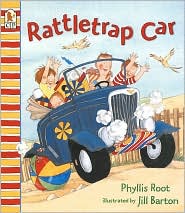
Root, Phyllis. 2001. Rattletrap Car. Illustrated by Jill Barton. Candlewick.
What's a family to do when they need a vacation--a relaxing day at the lake--but their car doesn't go fast or far? Read and see in Rattletrap Car.
Junie was hot. Jakie was hot. Even the baby was hot, hot, hot.
"Let's go to the lake," said Junie and Jakie.
"Go," said the baby.
Even though the father thinks the car isn't in any condition to make it all the way to the lake and back, he's game to give it a try. So they all make preparations. What do they bring? Razzleberry, dazzleberry, snazzleberry fizz; chocolate marshmallow fudge delight; a beach ball; a surfboard; and a three-speed, wind-up, paddle-wheel boat. Do they make it? Is there day everything they hoped it would be? You'll have to read and see for yourself.
Loved everything about this one: the story, the characters, the language, the illustrations. (The rattletrap car, for example, goes "flippita fluppita fizzelly sizzelly wappity bappity lumpety bumpety clinkety clankety bing bang pop!") This one is fun. Purely silly. Worth a giggle or two at least.
© Becky Laney of
Young Readers

Flewelling, Lynn. 2001. The Bone Doll's Twin. Bantam. 524 pages.
Iya pulled off her straw wayfarer's hat and fanned herself with it as her horse labored up the rocky trail toward Afra.
Fantasy. The Bone Doll's Twin is a compelling, almost-always interesting fantasy novel about a corrupt kingdom, divine prophecy, and magic. The legend (prophecy) goes that as long as the kingdom is ruled by a woman (warrior-queen), then all will be well and right. But all is not right, as the reader comes to see, because a usurper--half brother? brother?--has claimed the throne and begun a deadly massacre. All of the king's female relations are being killed off one by one by one.
The Bone Doll's Twin is the story of a would-be queen who must--her very life depends on it--grow up disguised (by magic, by blood magic) as a boy. (This is the work of Iya, Arkoniel, and Lhel). Tobin, our hero, has no idea that he is a she. He does know that he is haunted by the ghost/spirit of his twin "brother." Though he knows (can't remember if he was told directly or indirectly) that his twin was a girl, the ghost is always a he, his brother. (In fact, Tobin calls him "Brother.")
 It's a strange little story about witches and wizards and magic. A story about power and corruption. A story about staying alive and fighting for justice. In this book, the first of a trilogy, we witness Tobin's childhood. His mother is changed--emotionally troubled--by the death of one of her babies. Her mother is never the same after that. She spends her time making strange little dolls. One doll in particular is most precious to her. It is a strange doll, a faceless doll. It seems to bind her to the child that is no more. When his mother dies--suicide brought on by shock and fear--Tobin is forced to grow up even quicker. (He also inherits this doll; but he gives it a face.) His father neglects him for the most part--then sadly is killed in battle. And if he hadn't wandered across a strange old witch of a woman, his childhood might have been lonelier and even stranger. It also helps that he acquires a companion, a boy around his own age, Ki, to be his squire and go through all this schooling/training with him. I won't go into all the details--there are too many, and it's hard to know which ones would be spoilers--but Tobin begins training for the royal court he must one day enter. Those raising him, training him, know that it is just a matter of time before the young boy they all love so much--place such great hope in--is forced to leave his lands, his home, and begin living life at Court under the watchful eye of his (evil) Uncle-King and his followers.
It's a strange little story about witches and wizards and magic. A story about power and corruption. A story about staying alive and fighting for justice. In this book, the first of a trilogy, we witness Tobin's childhood. His mother is changed--emotionally troubled--by the death of one of her babies. Her mother is never the same after that. She spends her time making strange little dolls. One doll in particular is most precious to her. It is a strange doll, a faceless doll. It seems to bind her to the child that is no more. When his mother dies--suicide brought on by shock and fear--Tobin is forced to grow up even quicker. (He also inherits this doll; but he gives it a face.) His father neglects him for the most part--then sadly is killed in battle. And if he hadn't wandered across a strange old witch of a woman, his childhood might have been lonelier and even stranger. It also helps that he acquires a companion, a boy around his own age, Ki, to be his squire and go through all this schooling/training with him. I won't go into all the details--there are too many, and it's hard to know which ones would be spoilers--but Tobin begins training for the royal court he must one day enter. Those raising him, training him, know that it is just a matter of time before the young boy they all love so much--place such great hope in--is forced to leave his lands, his home, and begin living life at Court under the watchful eye of his (evil) Uncle-King and his followers.
I've left out so many things. I didn't mean to be so scattered. But there is no way I could really do this one justice in just a few paragraphs. The book is way too complex for that. (Which can be a good thing when you think about it.) If you like fantasy, especially if you like fantasy with wizards and witches and magic and magic spells, then you will probably enjoy this one. It's rich in detail. (There were a few scenes I wished for a little less detail.) Did I like it? Yes, for the most part. I wished for a little less detail on the intimate relationship between a young wizard (Arkoniel) and an ugly witch (Lhel) a woman with questionable hygiene.* I found the characters to be intriguing at the very least. I loved the relationship between Tobin and Ki--their friendship--and it was interesting to see how Brother influenced the action. The pacing worked well, for the most part, it kept me hooked and turning pages.
*I don't know that I'd go so far as to say it was worthy of
Literary Review's Bad Sex in Fiction Award. But it was bad. Of course, I guess it could have always been worse. This element of the book might take up five or six pages out of five hundred.
© Becky Laney of
Becky's Book ReviewsIf you're reading this post on another site, or another feed, the content has been stolen.




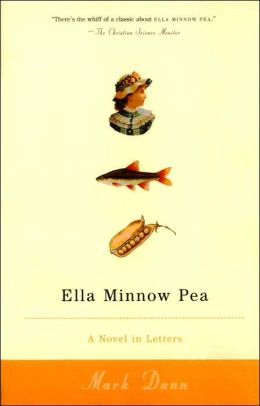
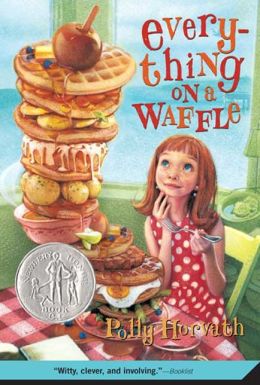
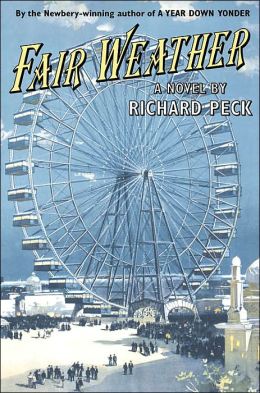
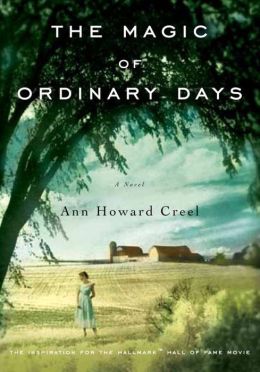
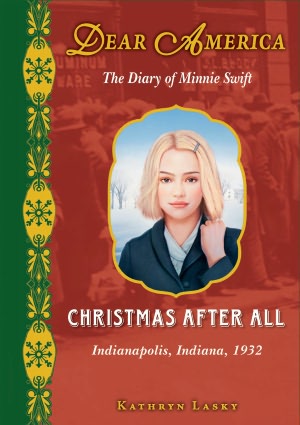


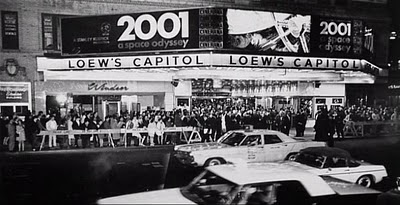
 photo by The U.S. Army www.flickr.com
photo by The U.S. Army www.flickr.com photo by R’Eyes www.flickr.com
photo by R’Eyes www.flickr.com


I'll keep this in mind especially for a friend of mine who loves WWII literature!
Merry Christmas, sweet Becky.
The spring will stay forever in the USA, and the floral gifts that you send there will land that. You got the colorful expressions that spark the events, and with them all in a floral manner, the gift combo that www.flowersdeliveryusa24x7.com
has in store for you is the option that you’ll stick to.